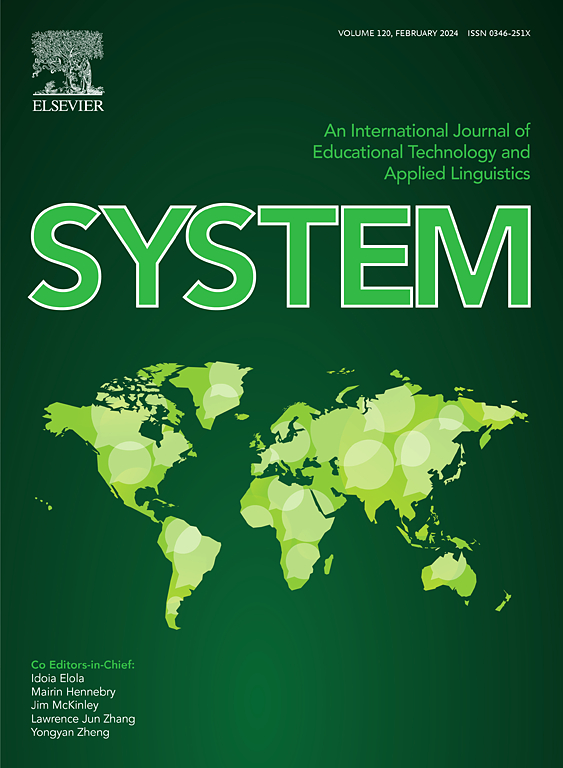Comparative effects of selenium-enriched lactobacilli and selenium-enriched yeast on performance, egg selenium enrichment, antioxidant capacity, and ileal microbiota in laying hens
IF 7
1区 农林科学
Q1 Agricultural and Biological Sciences
引用次数: 0
Abstract
Organic selenium (Se) has gained recognition in poultry nutrition as a feed additive to boost production and Se deposition in eggs and tissues, owing to its high bioavailability, efficient tissue accumulation and minimal toxicity. Selenium-enriched yeast (SeY) is a well-established source, while selenium-enriched lactobacilli (SeL), a newer alternative, offers the added benefits of probiotics. This study examined the effects of SeY and SeL on egg quality, antioxidant capacity, Se deposition, and gut health in laying hens. After a two-week pre-treatment with a Se-deficient diet (SeD), 450 Hy-Line Brown laying hens (30-week-old) were assigned into five dietary groups with six replicates of 15 hens each. The groups included a SeD, SeD supplemented with 1.5 mg Se/kg from SeY (SeY15), or 1.5, 3.0, and 6.0 mg Se/kg from SeL (SeL15, SeL30, SeL60). The feeding trial lasted for 12 weeks. SeY15 and SeL15 improved the feed-to-egg ratio (P < 0.05) in the latter stages. Haugh units were significantly increased (P < 0.05) in the SeY15 and SeL30 groups, while darker yolk color (P < 0.05) was observed in the SeY15, SeL15, and SeL60 groups. All Se-supplemented diets increased Se content in whole eggs, albumen, and yolk (P < 0.05), while SeL groups showed a dose-dependent effect. Antioxidant enzyme activities increased, and MDA content decreased in the serum (P < 0.05), with SeY15 showing the highest GSH-Px levels (P < 0.05). SeL60 increased serum alkaline phosphatase and aspartate transaminase, and distorted the liver architecture (P < 0.05). Se-diets reduced concentrations of reactive oxygen species (ROS) in the ileum and liver (P < 0.05). SeL15 improved the ileal villus height-to-crypt depth ratio (P < 0.05). SeY15 and/or SeL15 up-regulated TXNRD1 and SEPHS1 mRNA while down-regulating SCLY expression in the liver. SeY15 altered ileal microbiota by increasing both beneficial and pathogenic bacteria, whereas SeL15 predominantly boosted beneficial bacteria. SeL integrates the antioxidant properties of organic Se with the probiotic benefits on gut health, resulting in a performance-enhancing effect comparable to that of SeY. However, high SeL level (6.0 mg Se/kg) compromised productivity and metabolic functions while enhancing Se deposition.富硒乳酸菌和富硒酵母对蛋鸡生产性能、蛋硒富集、抗氧化能力和回肠微生物群的影响
有机硒(Se)由于其高生物利用度、高效的组织积累和最小的毒性,已在家禽营养中得到认可,作为一种饲料添加剂,可促进产量和硒在蛋和组织中的沉积。富硒酵母(SeY)是一种公认的来源,而富硒乳酸菌(SeL)是一种较新的替代品,提供了益生菌的额外好处。本试验旨在研究蛋氨酸和硒对蛋鸡蛋品质、抗氧化能力、硒沉积和肠道健康的影响。试验选用450只30周龄海兰褐蛋鸡,经过2周的缺硒饲粮预处理,随机分为5个饲粮组,每组6个重复,每个重复15只鸡。各组分别为硒化硒、硒化硒中添加1.5 mg硒/kg (SeY15)或硒化硒中添加1.5、3.0和6.0 mg硒/kg (SeL15、SeL30、SeL60)。正试期12周。SeY15和SeL15提高了后期料蛋比(P < 0.05)。se15和SeL30组的哈夫单位显著升高(P < 0.05),而se15、SeL15和SeL60组的蛋黄颜色较深(P < 0.05)。各硒添加组均提高了全蛋、蛋白和蛋黄的硒含量(P < 0.05),且硒添加组呈剂量依赖性。血清抗氧化酶活性升高,MDA含量降低(P < 0.05),其中SeY15的GSH-Px含量最高(P < 0.05)。SeL60使血清碱性磷酸酶和天冬氨酸转氨酶升高,肝脏结构扭曲(P < 0.05)。饲粮硒降低了回肠和肝脏活性氧(ROS)浓度(P < 0.05)。SeL15改善了回肠绒毛高度与隐窝深度比(P < 0.05)。在肝脏中,SeY15和/或SeL15上调TXNRD1和SEPHS1 mRNA,下调SCLY的表达。SeY15通过增加有益菌和致病菌来改变回肠微生物群,而SeL15主要增加有益菌。SeL将有机硒的抗氧化特性与益生菌对肠道健康的益处结合在一起,其提高生产性能的效果与SeY相当。然而,高硒水平(6.0 mg Se/kg)在促进硒沉积的同时损害了生产力和代谢功能。
本文章由计算机程序翻译,如有差异,请以英文原文为准。
求助全文
约1分钟内获得全文
求助全文
来源期刊

Journal of Animal Science and Biotechnology
AGRICULTURE, DAIRY & ANIMAL SCIENCE-
CiteScore
9.90
自引率
2.90%
发文量
822
审稿时长
17 weeks
期刊介绍:
Journal of Animal Science and Biotechnology is an open access, peer-reviewed journal that encompasses all aspects of animal science and biotechnology. That includes domestic animal production, animal genetics and breeding, animal reproduction and physiology, animal nutrition and biochemistry, feed processing technology and bioevaluation, animal biotechnology, and meat science.
 求助内容:
求助内容: 应助结果提醒方式:
应助结果提醒方式:


